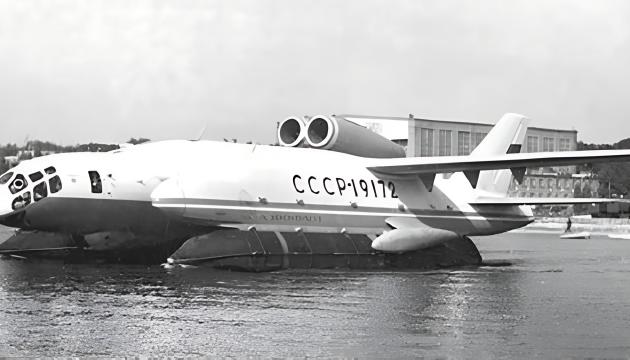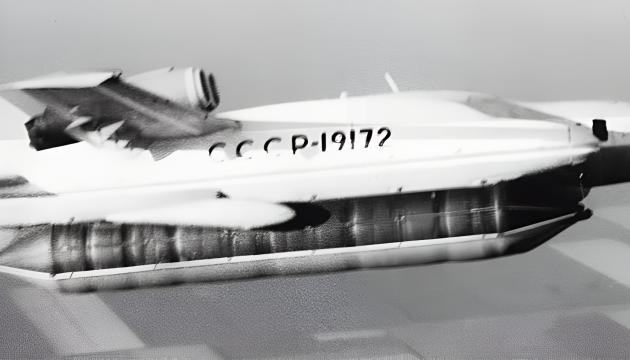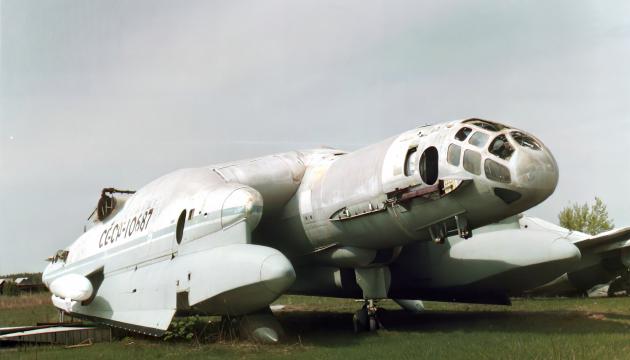Brief Summary:
Invention/Project: VVA-14 (Vertical Takeoff Amphibious Aircraft / Ground Effect Vehicle)
Designer: Robert Ludvigovich Bartini
Country: USSR
Development period: 1960s - 1970s (test flights from 1972)
Concept: Experimental aircraft combining functions of conventional airplane, amphibious vehicle, VTOL aircraft, and ground effect vehicle.
An exceptionally ambitious and futuristic project that was never fully realized due to technical challenges (missing critical engines), integration difficulties between flight modes, and termination after the designer's death. A prime example of technological "overreach".
Development History
Operating Principle
The VVA-14 was conceived as a "three-in-one":
- Aircraft: For high-altitude flight, it used two D-30M cruise turbojet engines mounted atop the center wing.
- Helicopter (VTOL): For vertical takeoff and landing, 12 (!) RD36-35PR lift turbojet engines were supposed to be installed under the wing. The critical issue: these engines were never delivered.
- Ground-effect vehicle: Large wings and a wide lower fuselage enabled low-altitude flight over water, using ground effect for improved efficiency during submarine searches.
- Amphibious: Inflatable pontoons (later replaced with rigid ones) allowed water takeoffs and landings.
Claimed Advantages
- Versatile basing: No need for airfields, capable of operating from any flat surface including water.
- Rapid response: Fast deployment to remote ocean areas in aircraft mode.
- Efficient patrolling: Long-duration, economical hovering over water in ground-effect mode.
- Stealth (relative): Low-altitude flight could reduce radar detection.
- All-weather capability (theoretical): Less dependent on airfield conditions.
Why Did It Fail?
- Missing lift engines: The primary reason. The partner design bureau never delivered the promised 12 RD36-35PR engines, making VTOL impossible.
- Technical complexity: Integrating three different flight modes in one machine proved incredibly challenging, pushing the limits of contemporary technology.
- Landing gear/pontoon issues: The originally planned inflatable pontoons proved unreliable; their replacement with rigid ones increased weight and degraded performance.
- Designer's death: After Robert Bartini's death in 1974, the project lost its chief visionary and driving force.
- High cost and shifting priorities: The project was extremely expensive, and the Navy's focus eventually shifted to other developments.
Ahead of Its Time?
Absolutely. The VVA-14 concept was incredibly bold and forward-looking. The idea of a universal vehicle capable of operating without airfields - combining aircraft speed, amphibious/ground-effect vehicle capability, and vertical takeoff - anticipated many modern aviation developments (Arctic rescue vehicles, heavy transport drones, perhaps even large "flying taxi" concepts). Bartini was trying to solve problems that remain relevant and challenging even today.
The technological base of the 1960s-70s was completely unprepared for such an ambitious undertaking.
What exactly was ahead of its time?- Control systems: Integrating three flight modes (VTOL, aircraft, ground-effect) with analog systems was nearly impossible. Modern digital fly-by-wire systems and powerful onboard computers - which didn't exist then - would be essential for stable control of such a "transformer."
- Powerplant: Managing and synchronizing 14 jet engines simultaneously (2 cruise + 12 lift) was a reliability and maintenance nightmare for that era's engineers.
- Materials: While advanced alloys were used, modern composites could significantly reduce weight while improving strength and durability.
- Cost and complexity: The project required funding levels and production technologies that only became available much later (and even today would make it extremely expensive).
Essentially, Bartini conceived a 21st-century vehicle with 20th-century tools. The designer's ambitions clearly outpaced the era's technological capabilities, which became one of the key reasons why this unique aircraft remained a bold but unrealized experiment.
Could It Be Revived?
- Direct VVA-14 restoration: Highly unlikely. The design is obsolete, the surviving Monino prototype is in poor condition, and key engines are unavailable.
- Concept: The idea of a multi-mode amphibious transport remains interesting. Modern composites, digital avionics, and possibly more efficient powerplants (including electric VTOL?) could make such a project feasible. However, costs and complexity would still be enormous, requiring a very specific niche (e.g., Arctic rescue operations, special transport).
WTF Factor
- Appearance: Just look at it! It resembles an alien spacecraft from a 1960s sci-fi movie accidentally parked in Monino. Utterly otherworldly design.
- Ambition: The very idea of merging an airplane, helicopter, and ground-effect vehicle is mind-blowing! The engineering audacity (or madness?) is off the charts.
- 12 lift engines! The mere thought of synchronizing and controlling that many engines is terrifying.
- Fate: Building such a technological marvel but never receiving its key components is peak engineering tragedy. Like constructing a starship without warp drive!


